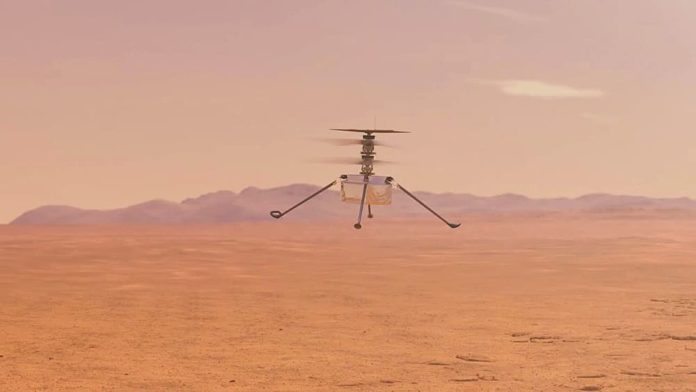Ingenuity will continue to collect data on Mars even after losing contact with Perseverance. Even after an accident that left the Ingenuity research copter stuck in the Martian sands with broken blades, its mission is not over. NASA engineers, gathered for one last time to communicate with the drone, have decided to turn it into a stationary observation point. That is how it will be used until all of its batteries run out.
The failure occurred earlier this year when Ingenuity, just half a minute after takeoff, suddenly went down. Attempts by engineers from Earth to get it in the air were unsuccessful. Later, images taken by Perseverance showed the copter’s broken propellers, denying it the ability to take off again. Perseverance therefore abandoned its drone at the end of February.
Yesterday’s meeting in the control room at NASA’s Jet Propulsion Laboratory in California was the final act of the collective work on Ingenuity. However, NASA officials believe the drone can still be useful to science even without moving from its current location.
Ingenuity is stuck in an area known as the “Hills of Valinor” at the western tip of Jezero Crater. Telemetry shows that the updated software sent earlier continues to work normally. This means that even after losing contact with Perseverance, Ingenuity can still transmit data back to Earth.
Ingenuity will now “wake up” every Martian sol, fire up its computers, check systems and gather information. For example, temperature data on the surface of Mars, which will help improve the sensor network on board. In addition, its colour camera will periodically take pictures of its surroundings. This process will continue until Ingenuity’s power system fails due to Martian dust contamination or aging.
Even after that, the information collected by the drone will be preserved: its memory cards are capable of storing observations for at least 20 years. Scientists hope that this will lead to a breakthrough in the study of Mars’ weather conditions and its suitability for future human missions.
Either way, the quadrocopter, originally designed for only a few flights, has exceeded expectations. It has spent more than a thousand Martian days on the surface and has taken to the air 72 times. Perhaps in decades to come, someone will visit the Hills of Valinor and see this unique monument to Earth science.



